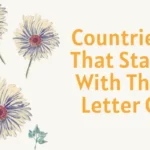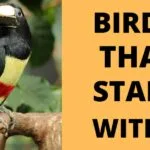Flowers are fascinating as well as add beauty to a garden. A single blossom’s sepals, petals, stamens, and pistil may keep one occupied for many hours, not to mention the nearby buds or foliage.
Flowers That Start with I – List of Flowers Begins with the Letter ‘I’

When you take a moment to consider each unique bloom in your yard, what textures, colors, or scents do you notice? Here are the names and descriptions of interesting flowers that begin with I to further awe the landscape.
Iceberg Rose
The stunning hybrid rose, also referred to as Rosa ‘KORbin’, called the iceberg rose was developed in Germany in 1958. Repeat-flowering Floribunda roses known as “Iceberg roses” are raised as deciduous woody shrubs.
Iceberg roses bloom in late summer with clusters of stunning white double blossoms that can occasionally have pink undertones. Up to 35 petals can be seen in a single bloom. These magnificent hybrid roses bloom from summer till fall and have a delicate, sweet perfume.
Ice Plant
Ice plants are vibrant perennial fig-marigold (Aizoaceae) mat-forming plants. These lovely evergreens are indigenous to South Africa and do well in hot, dry conditions. As a result, in USDA Zones 6 to 10, ice plants make superb ground-cover flowers.
Ice plants have slender, succulent-like leaves and spongy roots. A profusion of daisy-like blossoms is produced by these prolific perennials. Each blossom on an ice plant can be up to 2 inches big and comes in vivid colors of pinkish-purple.
Iceland Poppy
Iceland poppies are not endemic to Iceland, despite their name. Instead, these transient perennials are indigenous to portions of North America and Asia. Because they flourish in Zones 3 to 10, Iceland poppies are sometimes known as Arctic poppies or hardy poppies.
These flowers, whose names begin with the letter I, have papery cup-shaped blossoms and feathery bluish-green leaves on stems that are hairy. In addition to having a mild scent, Iceland’s poppy flowers bloom between late spring and early summer.
Inca Lily
Beautiful tuberous perennials belonging to the Alstroemeriaceae family, Inca lilies are also referred to as Peruvian lilies. The South American countries of Brazil and Chile are home to these fascinating flowers. In Zones 6 to 10, inca lilies thrive.
Inca lilies feature six-petalled, vividly colored blossoms with dark specks or stripes on them. The flowers have purple, pink, red, orange, yellow, and white hues among others. Inca lilies grow in full sun and bloom from late spring until October.
Impatiens
Impatiens, also referred to as busy Lizzie, are lovely herbaceous perennials in the Balsaminaceae family. These plants, which are native to Eastern Africa, are typically grown as annual bedding plants in Zones 10 and 11. Impatiens flowers are also available in a variety of stunning varietals.
Fast-growing impatiens produce clumps of elliptical or oval-shaped leaves in clusters. These plants likewise produce vibrant, five-petaled blooms with tiny spurs. Flowers from impatiens come in pink, orange, purple, white, red, and yellow hues.
Inca Marigold
Even though they are native to Mexico, Inca marigolds are frequently referred to as African marigolds. These lovely marigolds are perennial or annual herbaceous members of the aster or daisy family (Asteraceae). In Zones 2 to 11, inca marigolds are often planted as annuals.
Bright orange or yellow pom-pom-like flowers on incan marigolds grow from the summer to the late fall. Additionally, the leaves of these marigolds are pinnate and can have up to 17 lance-shaped leaflets. Inca marigolds make great companion plants as well.
Indian Balsam
Indian balsam, a herbaceous annual from the Balsaminaceae family and also known as Himalayan balsam, is a plant. These blooms are indigenous to the Himalayas, as their other name suggests. Additionally spreading over the Northern Hemisphere is Indian balsam.
Indian balsam features lovely pink blooms with a hood and huge upper and lower petals. On stems that are green or reddish and have long, lance-shaped leaves, these flowers are produced. Additionally, when crushed, the leaves release a pungent musty smell.
Incarvillea
Beautiful exotic perennials called incarvillea are indigenous to southwest China and have stunning flowers. They are members of the trumpet vine or begonia family. Although incarvillea flowers are not related to actual ferns, they are frequently referred to as hardy gloxinia or flowery ferns.
In Zones 5 to 7, these flowers that begin with the letter I thrive and are available in a variety of vibrant cultivars. Basal rosettes of fern-like leaves with airy leaflets can be found on these attractive perennials. A trumpet-shaped flower with pink petals and a yellow center is another feature of incarvillea plants.
Indian Blanket
Indian blanket flowers are among the most beautiful flowers that start with the letter “I,” in my opinion. These flowers belong to the daisy family and are either annuals or short-lived perennials. Native to Mexico and parts of the United States, Indian blanket flowers.
Large, daisy-like Indian blanket blooms frequently have two colors. These plants have basal rosettes of alternating leaves with serrated margins and hairy stalks. In Zones 2 to 11, Indian blanket flowers flourish in direct sunlight.
Indian Chestnut
Indian chestnut trees are sometimes known as purple bauhinia trees or orchid trees. These medium-sized, deciduous pea family trees are indigenous to India and Myanmar. In Zones 9 to 12, Indian chestnut trees flourish in the humid, tropical climate.
Long, spherical leaves in the shape of a heart grow on Indian chestnut trees. Indian chestnut trees produce stunning blossoms with five thin petals in the late summer and into the late fall. A lovely scent emanates from these blossoms.
Indian Breadroot
Indian breadroot, often referred to as prairie turnip or timpsula, is a perennial herbaceous member of the Fabaceae family of legumes and peas. In the central parts of North America, these plants flourish in arid environments like prairies and woods.
These letters-of-the-alphabet flowers I have a plant with hairy stalks and compound leaves with five leaflets per leaf. At the ends of the branches, the flowers are produced in thick clusters and resemble purple peas. The ideal growing zones for Indian breadroot plants are 4 to 8.
Indian Cress
Indian cress, also referred to as nasturtiums, is a vibrant, annual member of the Tropaeolaceae (nasturtium) family that grows quickly. Indian cress is a trailing plant that is native to areas of South America. In Zones 2 to 11, Indian cress is usually planted as an annual.
These I-flowers produce broad, spherical leaves with noticeable cream veins. These leaves are complemented by unassumingly fragrant orange or crimson trumpet-shaped blooms. Flowers and leaves are both edible.
Indian Hyacinth
Indian hyacinth, often referred to as common camas, is a herbaceous perennial belonging to the Asparagaceae family of plants. These bulbous plants generate slender stemmed, grass-like basal rosettes. Racemes of blue blooms with six tepals that resemble stars appear throughout the spring and summer.
These flowers that begin with the letter I are indigenous to western North America, where they flourish in particular environments called camas prairies.
Indian Hawthorn
The rose family (Rosaceae) includes Indian hawthorn trees as evergreen shrubs and small trees. These lovely trees are indigenous to China, Japan, and a few other countries in Southeast Asia. Although the Indian hawthorn is mostly planted as an ornamental tree, it is occasionally utilized in bonsai.
Indian hawthorn trees bloom in the spring with dense terminal clusters of tiny, fragrant pink or white flowers. Oblong leaves and appealing purplish-brown to grayish-brown bark are further features of Indian hawthorn, which also varies in age.
Join 25,000+ smart readers—don’t miss out!








